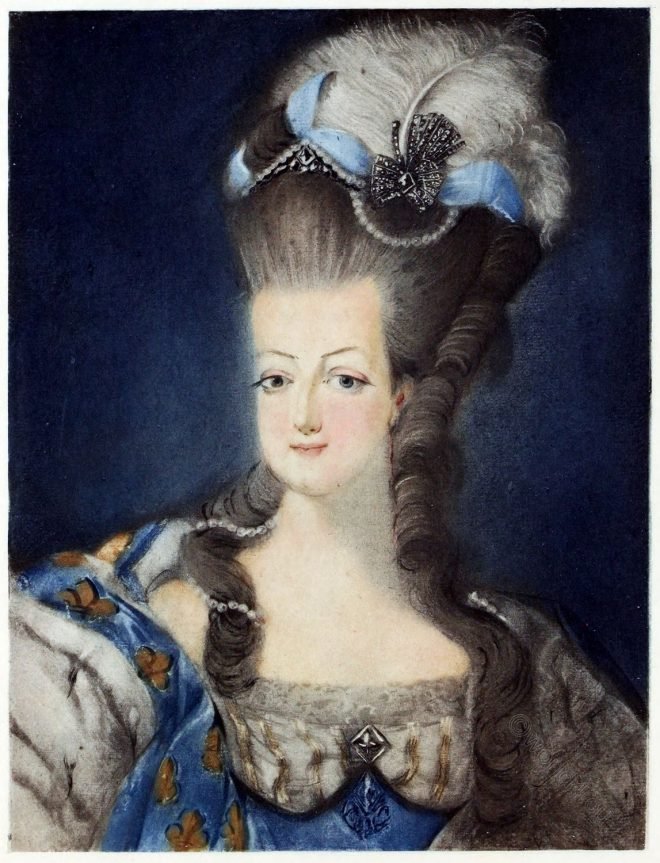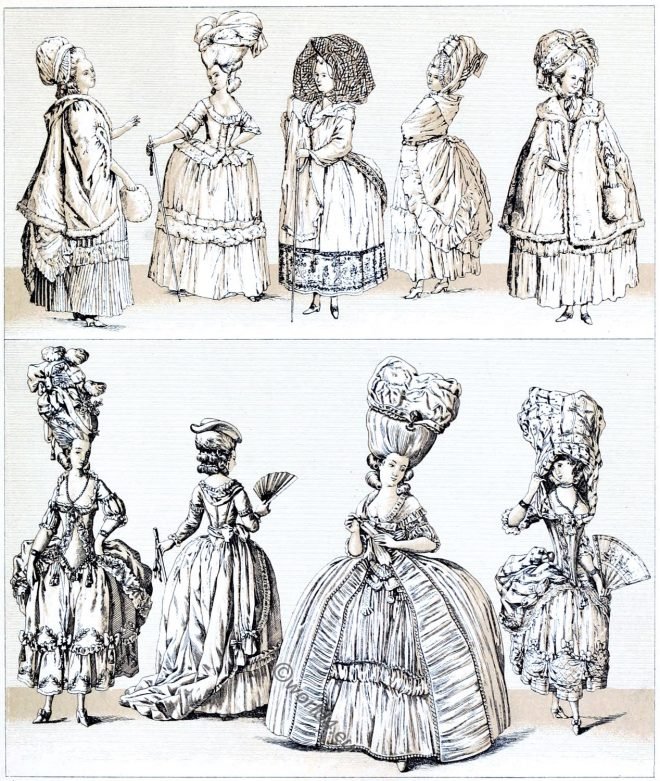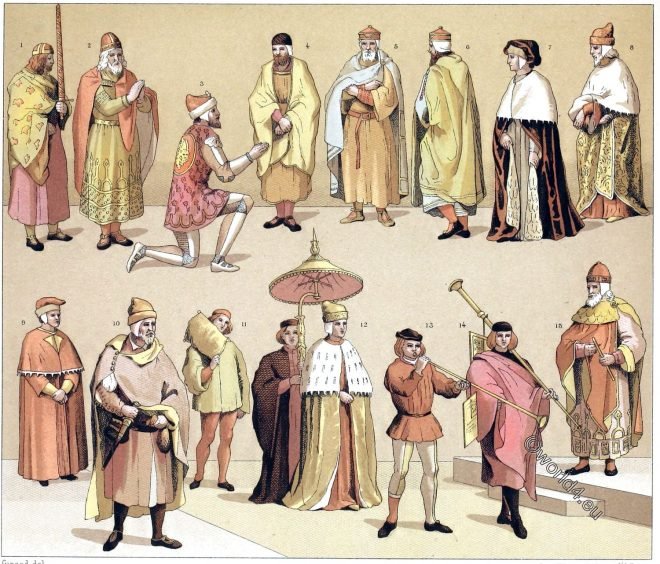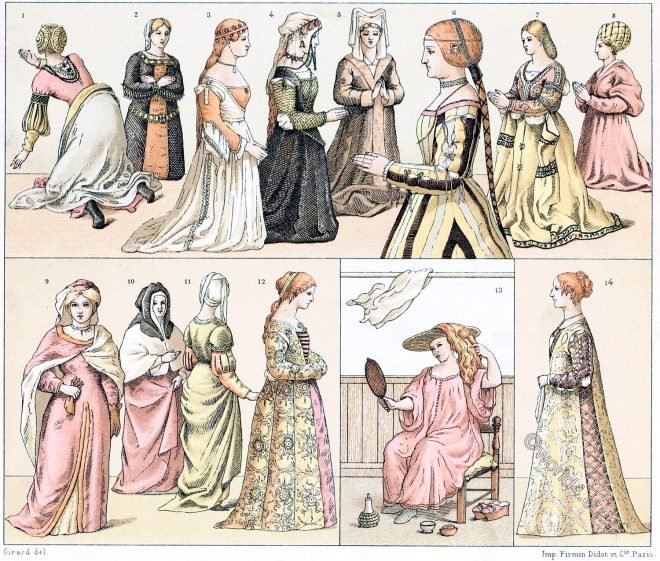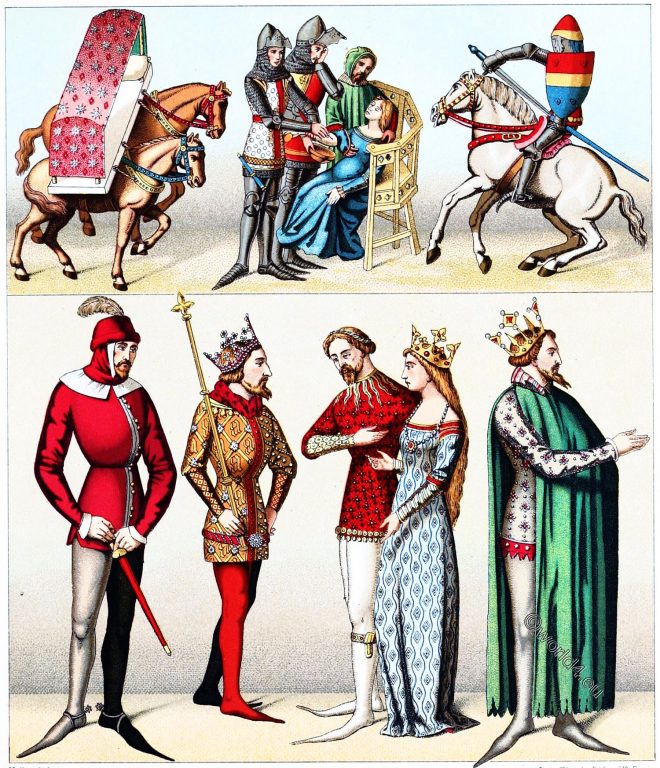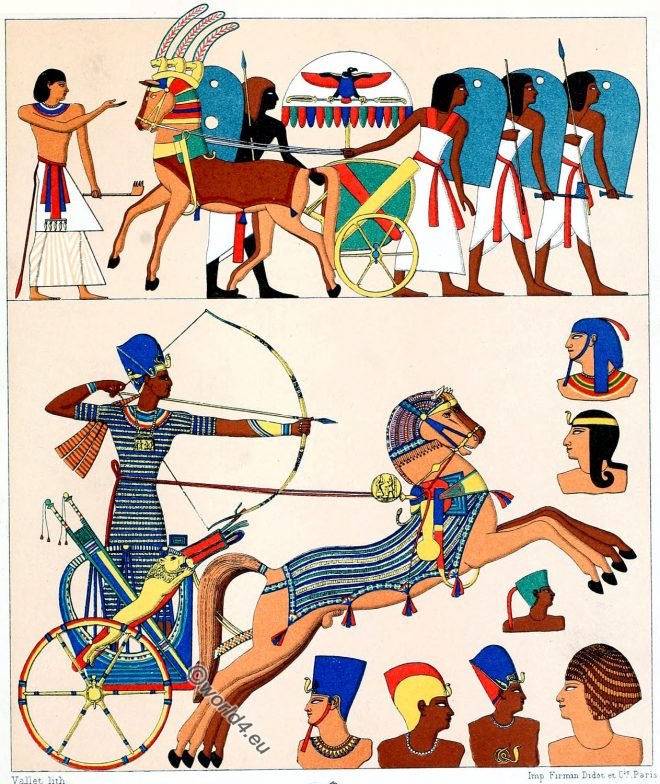The illustrations belong to the 17th century and are part of a series of portraits of the last rulers of the Kingdom of Telingana, of which Golkonda was the capital.
Category: Nobility
Marie-Antoinette as Dauphine and as Queen of France.
Marie-Antoinette as an example of elegance and extravagance.Rococo the period of the gallantry.
Extravagance of clothes and hairstyles during the rococo period.
France 18th century.
Female costumes of the rococo. Fashions from the first period of the government of Louis XVI. Extravagance of clothes and hairstyles.
The Doge of Venice from the 9th to the 16th century. Officials.
The Doge of Venice from the 9th to the 16th century. State regalia. Officials. Jewish merchant of the 14th century.
The bourgeoisie and the lower classes under Louis XV.
France Rococo 18th century. The Casaquin, pet-en-l’air or Caraco. Costumes of the nobility. The bourgeoisie and the lower classes under Louis XV. Historical figures and fashion types.
Female fashions in the 14th, 15th and 16th centuries. Italian Renaissance.
Renaissance. Italian and Dutch types. Female fashions in the 14th, 15th and 16th centuries. The coloring of the hair in Venice.
The great state robe. General fashion types. France 1775-1785.
France 18th century. The great state robe. Fashion types 1775-1785. The decoration. Hairstyle. Galerie des modes et costumes français
Medieval civil and war costumes of Italy, France and England. The Litter.
The close costume of the 14th century. Knights and squires habit of dressing. The footwear. The main piece of clothing for women at that time was the cotte hardie, a close-fitting, short-sleeved skirt, which made the body shapes stand out plastically.
Louis XIV and the officers in the livery of the royal house.
The fragments shown here are borrowed from a painting by Van der Maulen depicting the entry of Louis XIV and Maria Theresa into Arras after the beginning of the campaign in 1667. The Queen’s Marstall. The grand stable master. Ladies of honour. The Gardes du Corps. The king’s chariot.
Egypt. War dresses. Headgear and various costumes.
The representations on this panel are taken from Upper Egyptian wall paintings. War dresses. Headgear and various costumes. The pharaoh in the fight. The war chariot. Vultures and sparrowhawks were the symbol of supreme power.


